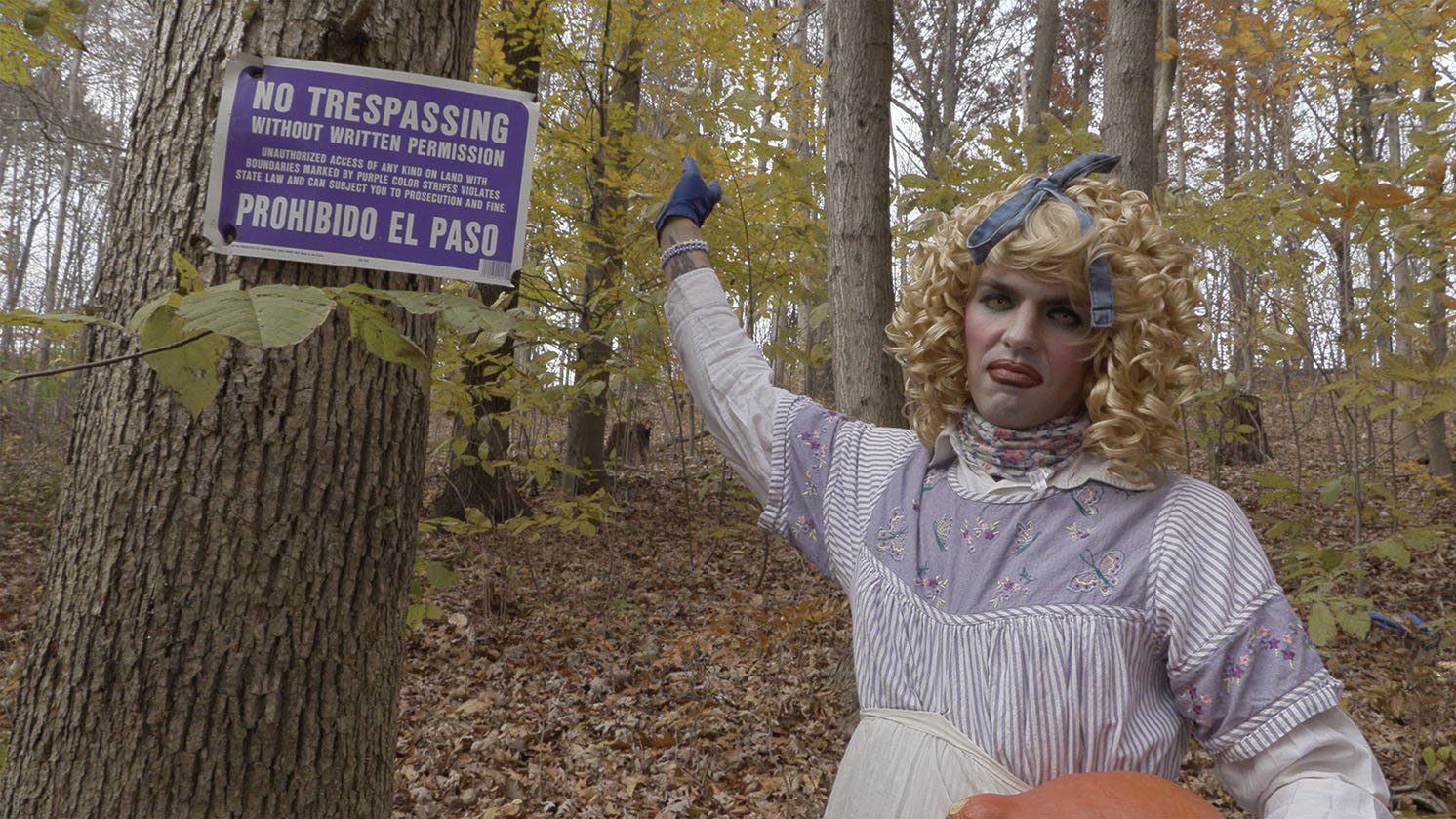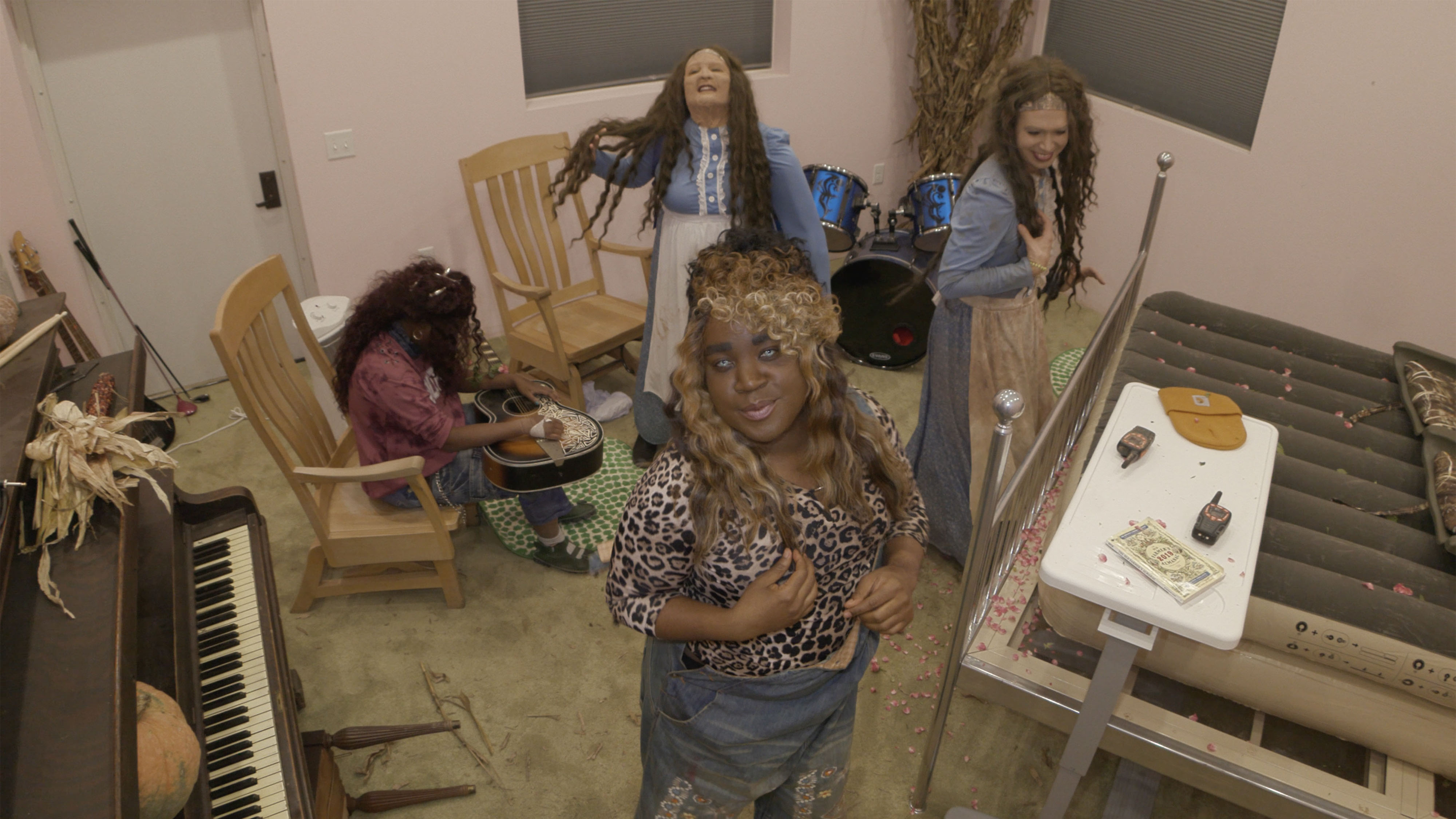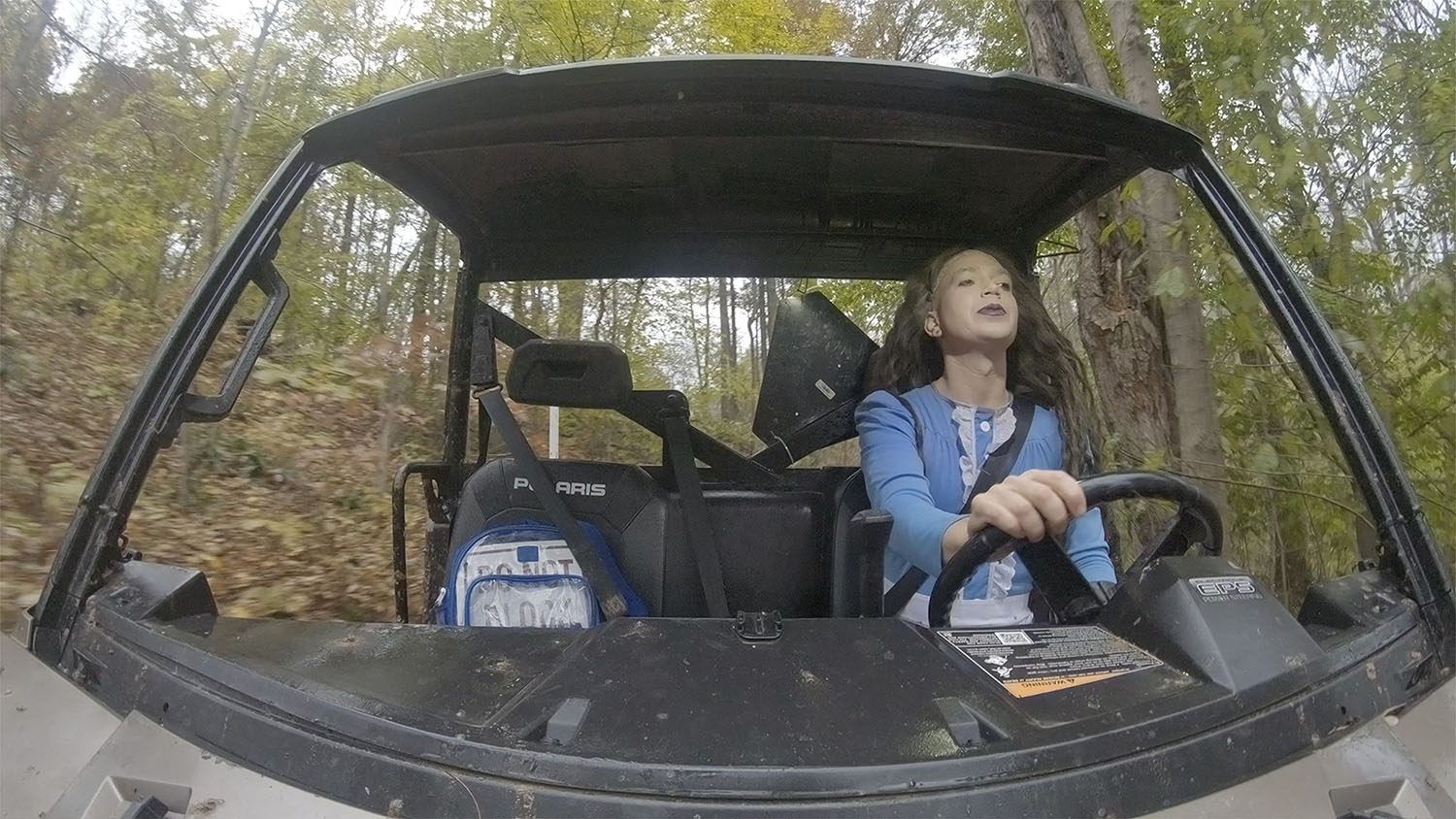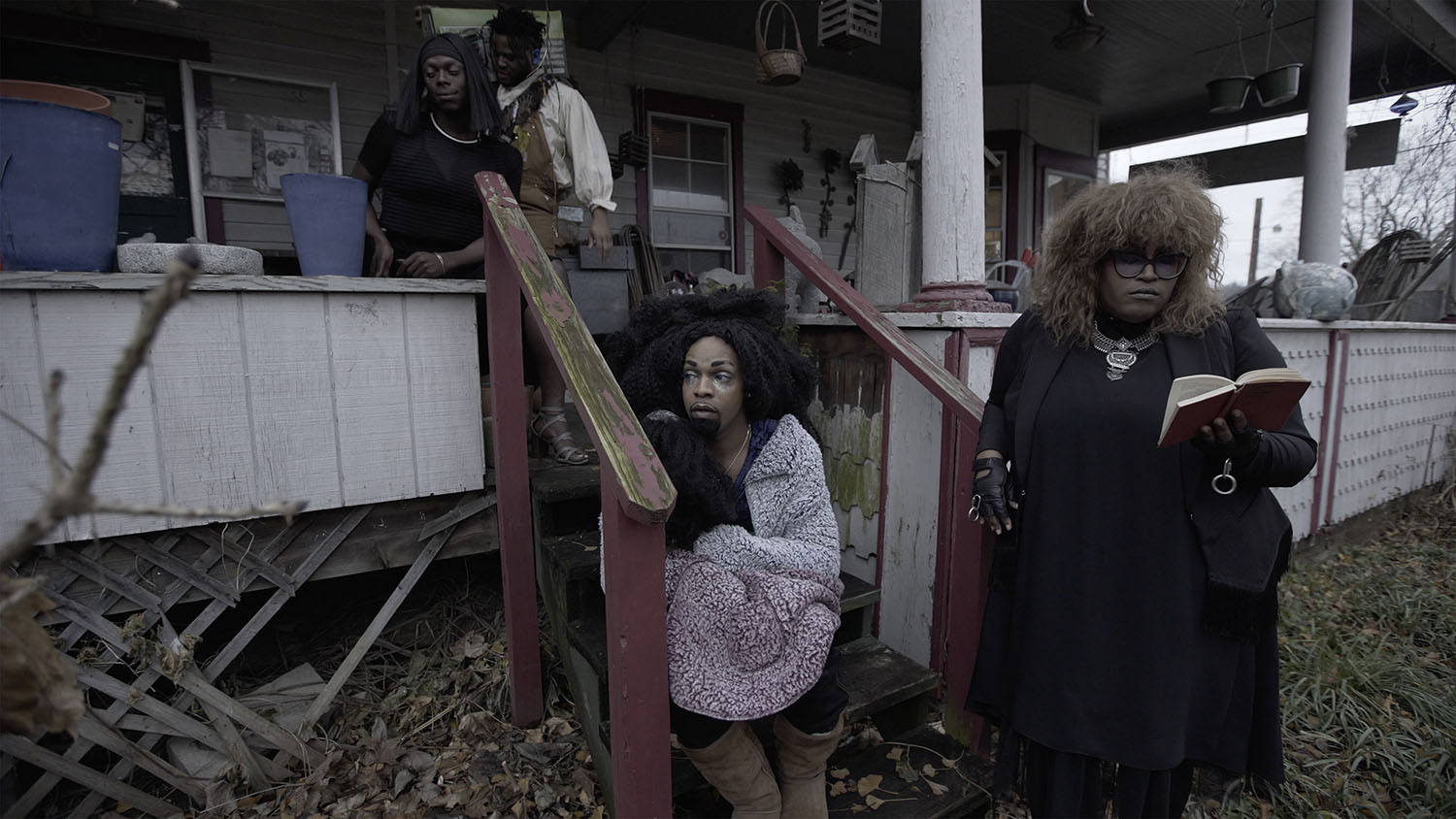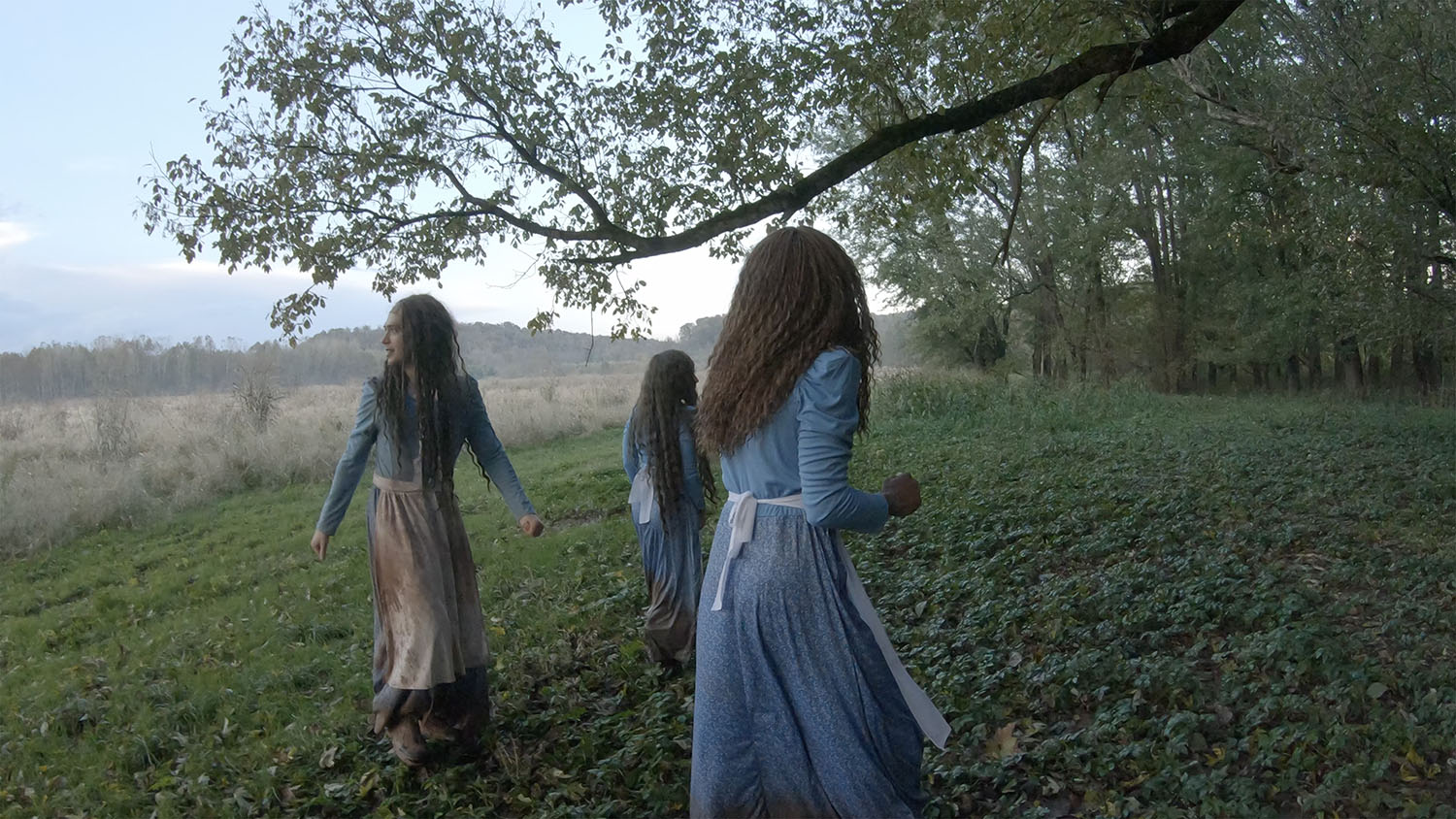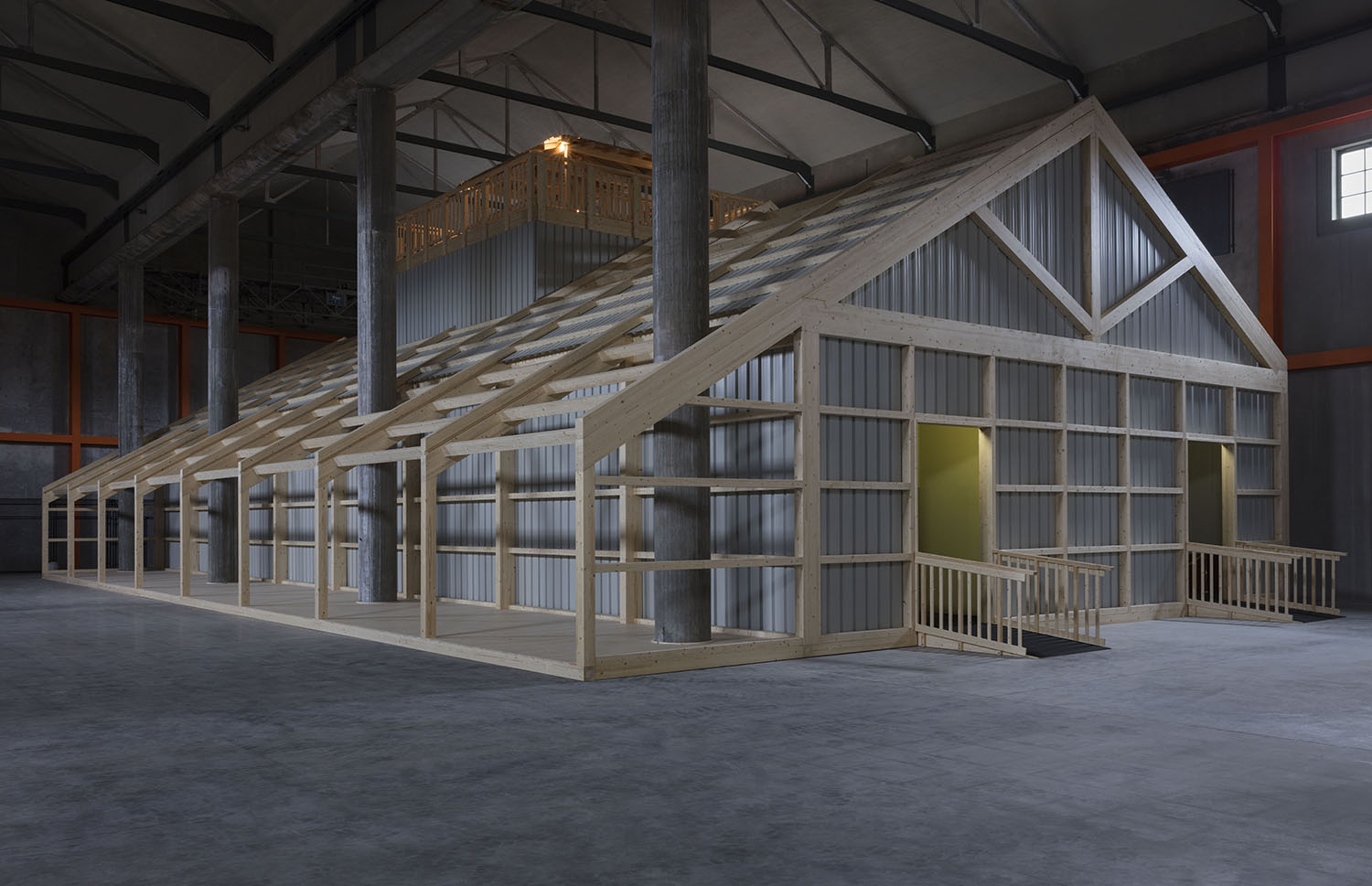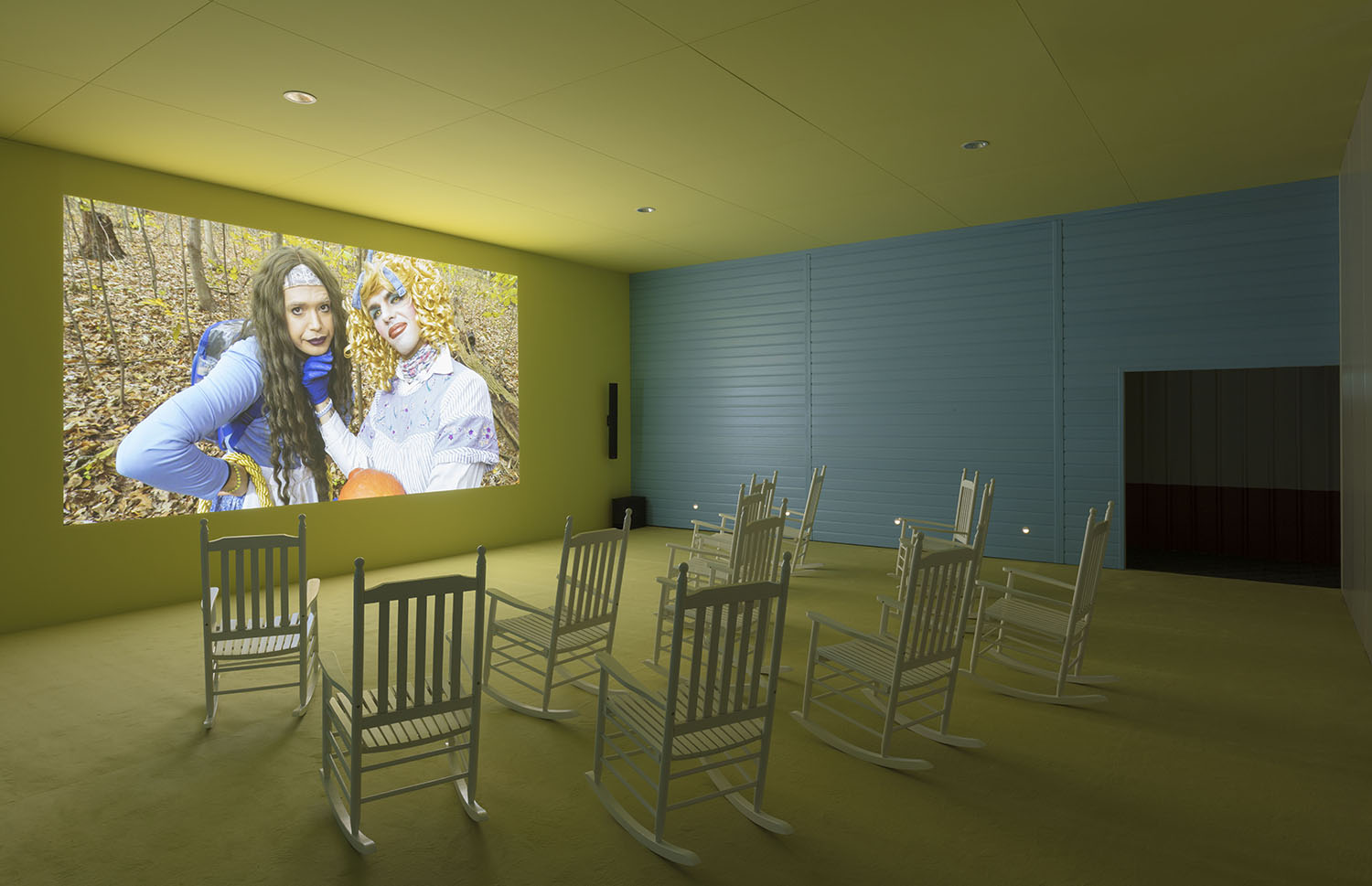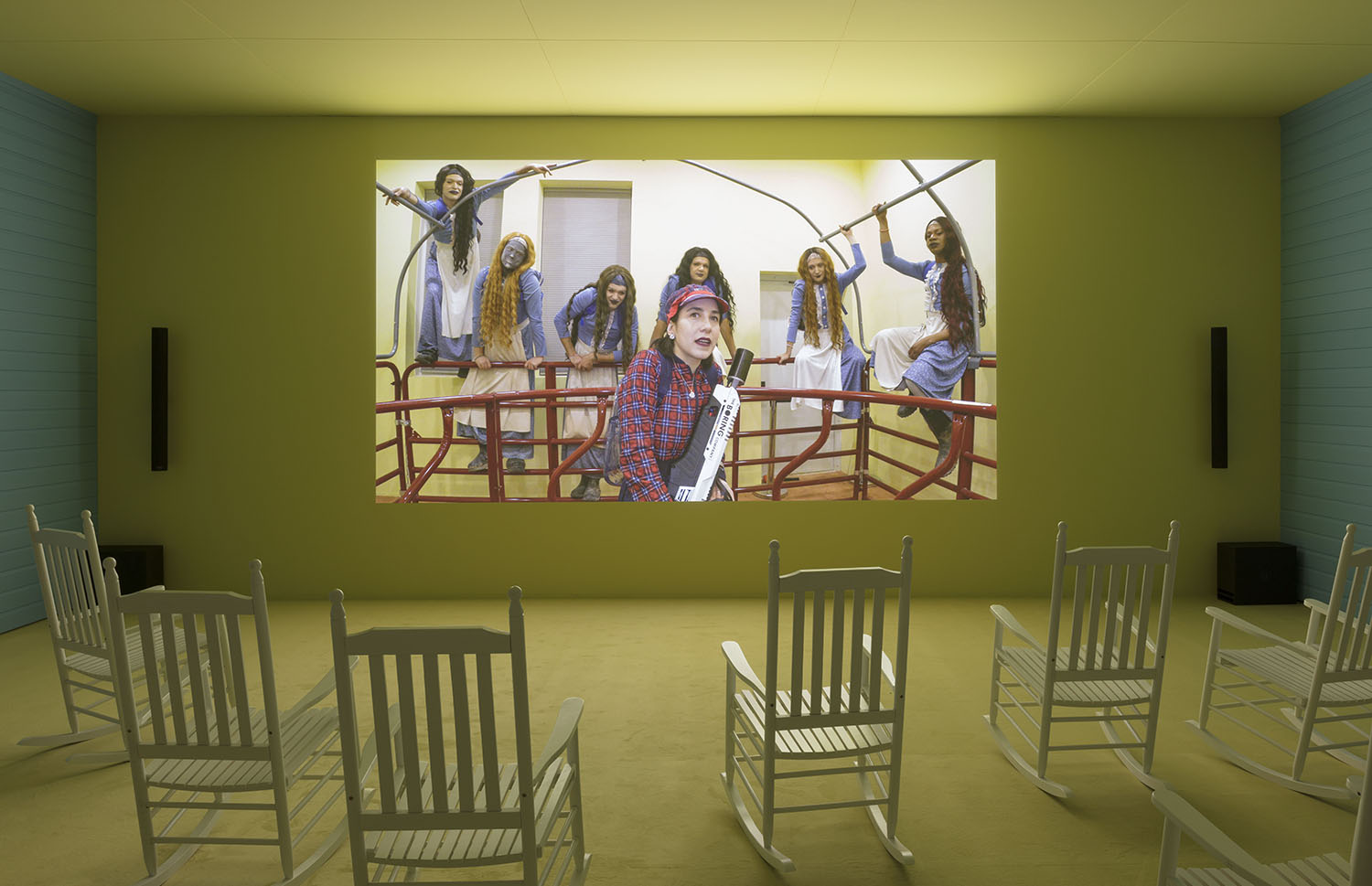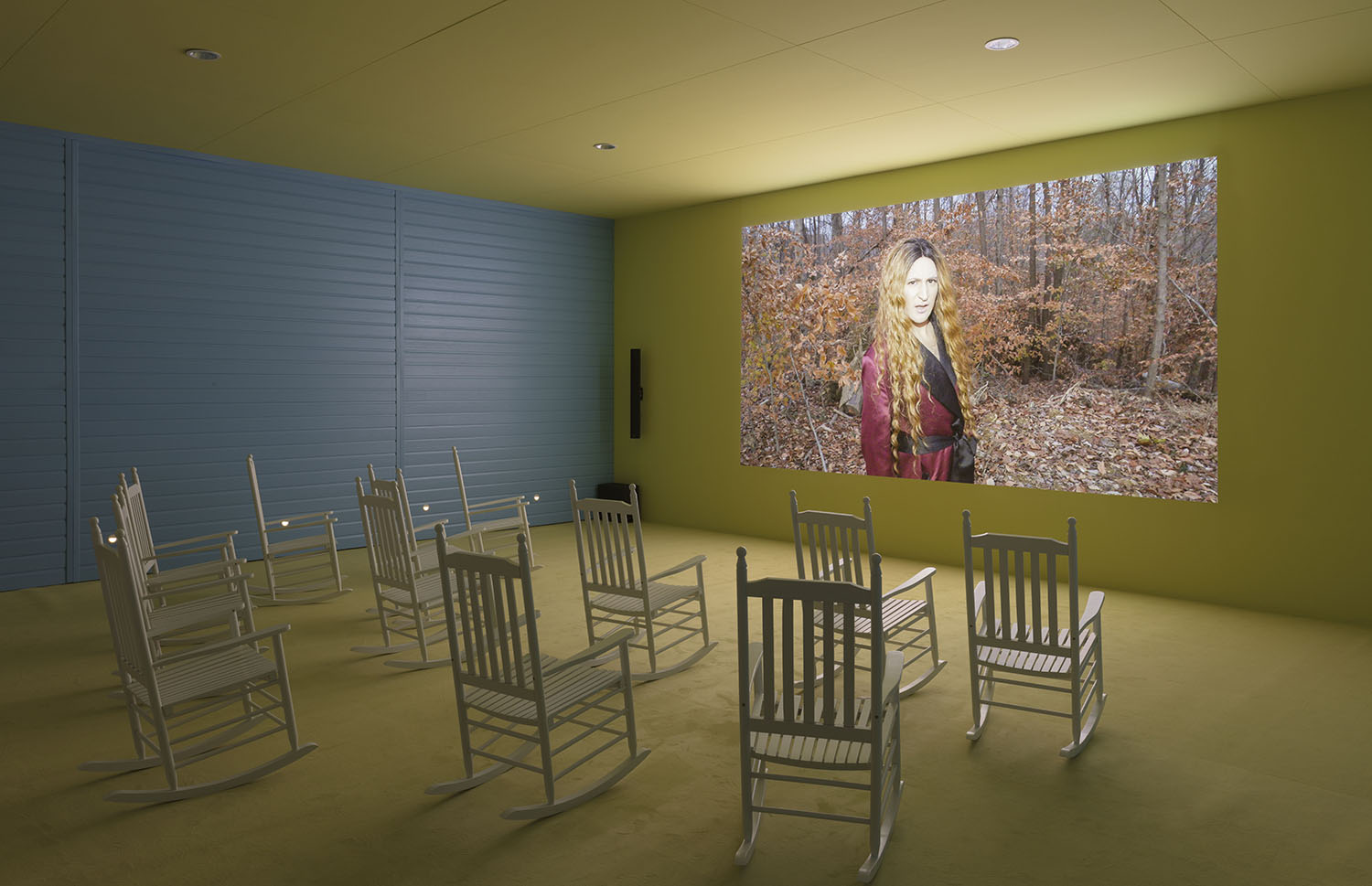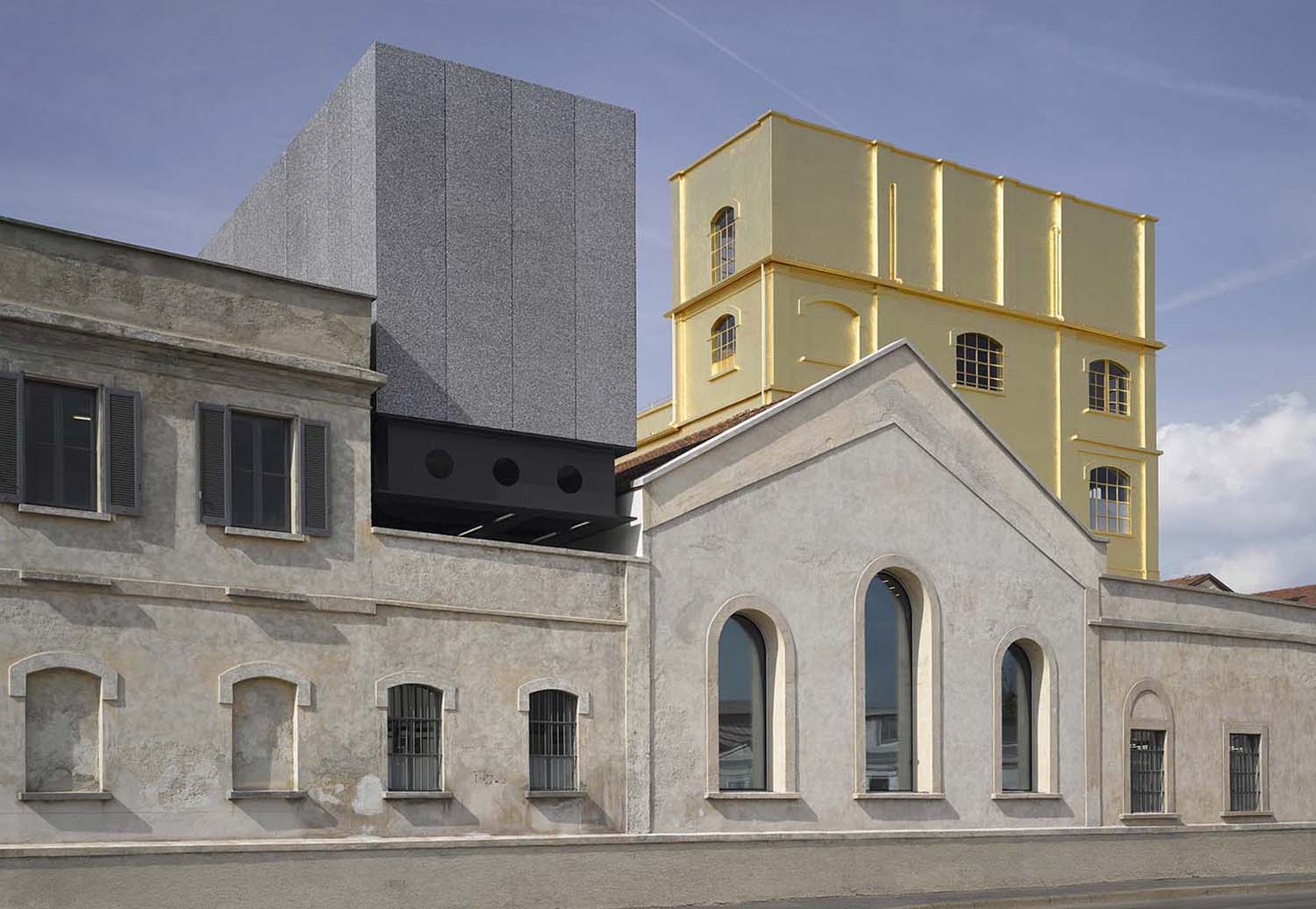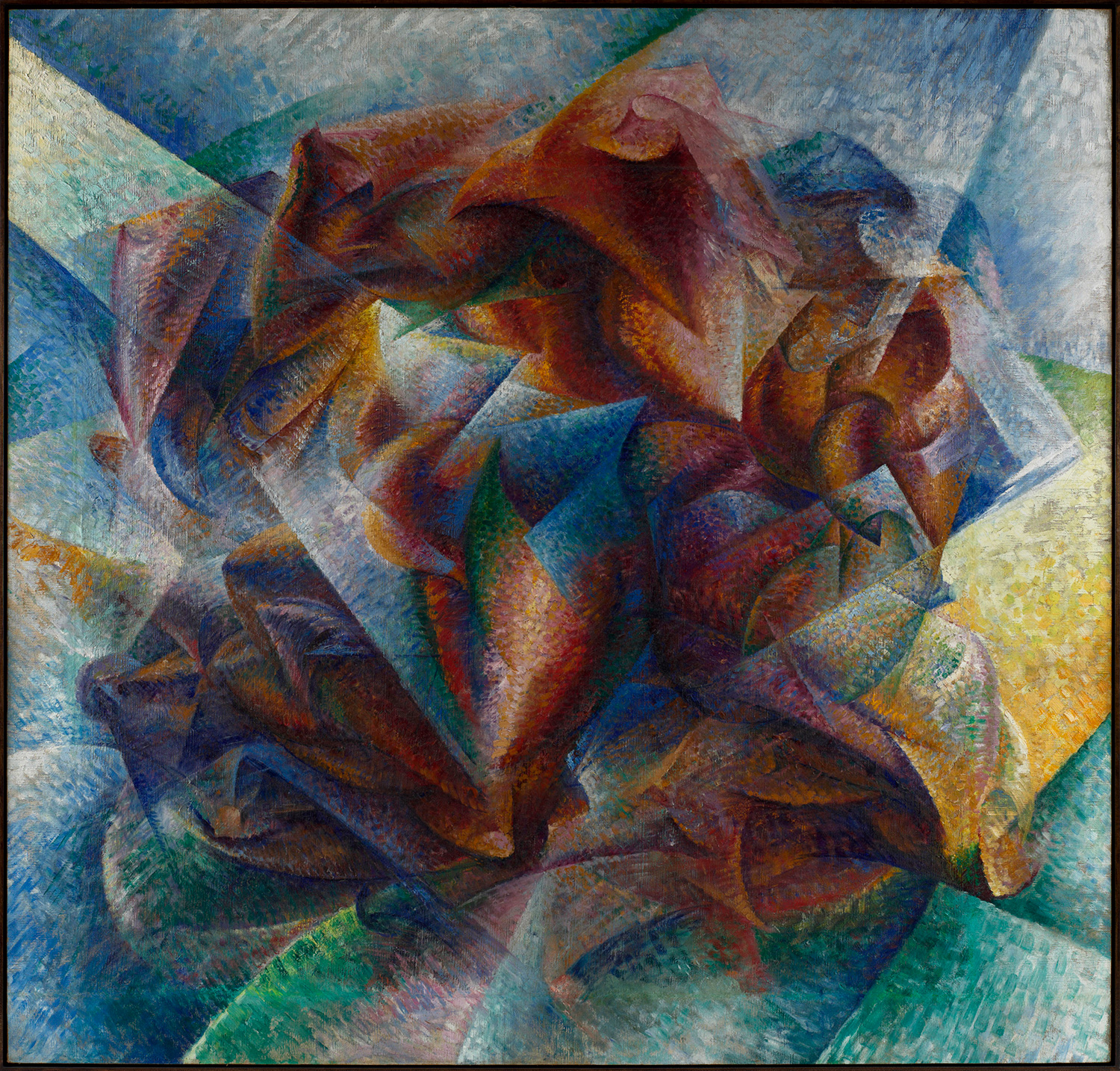Depicted today, Jean-Jacques Rousseau’s “noble savage” would have a stylist. Perhaps more than one. This cynical statement prompts us to ask what, in the end, remains of our (human) nature when it is made synonymous to “location”; when the home, far from Heidegger’s “hut,” is reduced to an indoor set; and the intimacies of human relationships are defined by algorithms and followers? The protagonists of the videos commissioned by Fondazione Prada and conceived by Lizzie Fitch and Ryan Trecartin attempt to answer these questions through the discourse we have come to know best: the grotesque hyper-representation of ourselves on social media.
For two years, both Fitch and Trecartin relocated to the Ohio, residing in its countryside, to immerse themselves in nature in its most organic form. The same coercive structure is a constant throughout the environmental and sound installations conceived for the Podium, the Deposito, and courtyard of Fondazione Prada’s complex: it forces visitors into a fixed course, making them navigate the space like lab rats, moving from each fake-bucolic hut that hosts each video.
The moving images are filled with psychedelic and acidic colors, trashy fonts, irritatingly out-of-focus frames, and dialogue written as memes. The result: multiple movies with no plot. For a plot implies a story to tell and a definitive conclusion marked by “The End.” Instead, these movies act as hysterical mise-en-scènes of a “never-ending now.” The actors shoot album covers for musical recordings that will never be played, and improvise video clips with choral castings for nonexistent bands. Today, our prerogative prioritizes the action — that a project can be realized, not its actual realization. We have neither the time to think of the future nor of any narrative apocalypses; Instagram stories have radically changed the way we experience the world, and Fitch and Trecartin show us the existential consequences. We have become schizophrenic in the narration of our lives, steeped in the permanent and maddening feeling of not knowing enough — or rather, of not showing (off) enough: these are now interchangeable.
Today, our identities are built upon performativity, like the “natural born comedians” of these videos, dressed as actors in a low-budget period film mimicking David Cronenberg, filming themselves with a camera fixed in foliage. For the urbanized and digitalized subject, nature is no more the locus amoenus but rather a set place that prompts self-exploitation. With every share and post we have become witness to an ontological change in our own disposition, wherein modesty is of no value anymore but rather something to “share.” In the final room we are pragmatically surrounded by a four-channel video showing enchanted nature via varying schizoid perspectives. If Heidegger built a hut in the woods in order to search for the truth — an approach to theory strictly bound to the human dimension of “self-hiding” from the world — here, in contrast, it is the forest that is welcomed by the hut through the artificial display of the videos. Instead of showing the truth, this time they manage to hide it.

